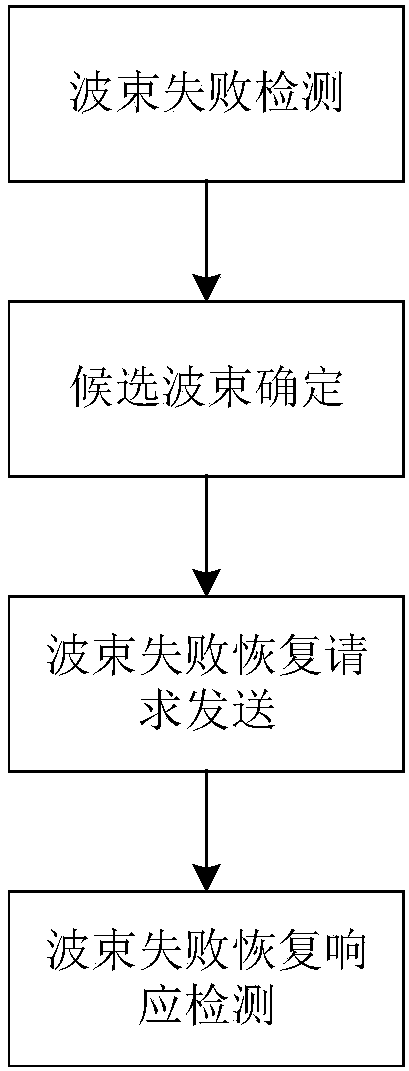Random access method, user equipment and base station equipment
A technology of random access response and preamble sequence, which is applied in the directions of multiple use of transmission paths, pilot signal allocation, digital transmission systems, etc. The effect of reducing the request delay and reducing the delay
- Summary
- Abstract
- Description
- Claims
- Application Information
AI Technical Summary
Problems solved by technology
Method used
Image
Examples
Embodiment 1
[0077] In this embodiment, a resource configuration method of a beam failure recovery request will be introduced in conjunction with a specific system. Assuming that the base station works in the high frequency band, multi-beam operation is used to compensate for the large path loss. The beam failure recovery request uses dedicated time-frequency resources and sequence resources. The time-frequency resources are similar to the time-frequency resources of the random access channel, and can be distinguished from the time-frequency resources of the random access channel through frequency division multiplexing, or through time division multiplexing. Distinguish by means, etc.
[0078] The base station configures resources for the beam failure recovery request by using high-layer signaling or downlink control information. The resources include time-frequency resources and sequence resources. Firstly, the sequence resource allocation method provided in this embodiment is described...
Embodiment 2
[0110] In this embodiment, a beam failure recovery process will be introduced in conjunction with a specific system. In this embodiment, the beam failure recovery process is briefly described as follows:
[0111] The terminal reads the dedicated channel time-frequency resources and preamble resources used in the beam failure recovery process.
[0112] If the terminal needs to send a beam failure recovery request, it determines and selects downlink candidate beams according to downlink measurement results, and selects time-frequency resources and preamble sequences according to the correspondence between downlink transmission beams and time-frequency resources / preamble sequences. If the downlink candidate beam selected by the terminal according to the measurement results cannot select the corresponding time-frequency resource / preamble sequence (for example, the downlink transmission beam is not in the corresponding relationship list), the terminal chooses to fall back to the co...
Embodiment 3
[0124] In this embodiment, a method for requesting system information transmitted on demand will be introduced in conjunction with a specific system. In this embodiment, the process for the terminal to obtain the on-demand transmission system information is as follows:
[0125] The terminal selects the preamble to be transmitted through the correspondence between the system information or system information group to be transmitted on demand and the random access preamble;
[0126] The terminal sends the corresponding preamble sequence in the random access channel;
[0127] The terminal detects the random access response in the downlink control channel, and obtains the time-frequency resource position of the system information.
[0128] In this embodiment, it is assumed that the base station reserves a part of the preamble sequence and establishes a corresponding relationship with corresponding system information or system information group. The corresponding relationship may...
PUM
 Login to View More
Login to View More Abstract
Description
Claims
Application Information
 Login to View More
Login to View More - R&D
- Intellectual Property
- Life Sciences
- Materials
- Tech Scout
- Unparalleled Data Quality
- Higher Quality Content
- 60% Fewer Hallucinations
Browse by: Latest US Patents, China's latest patents, Technical Efficacy Thesaurus, Application Domain, Technology Topic, Popular Technical Reports.
© 2025 PatSnap. All rights reserved.Legal|Privacy policy|Modern Slavery Act Transparency Statement|Sitemap|About US| Contact US: help@patsnap.com



